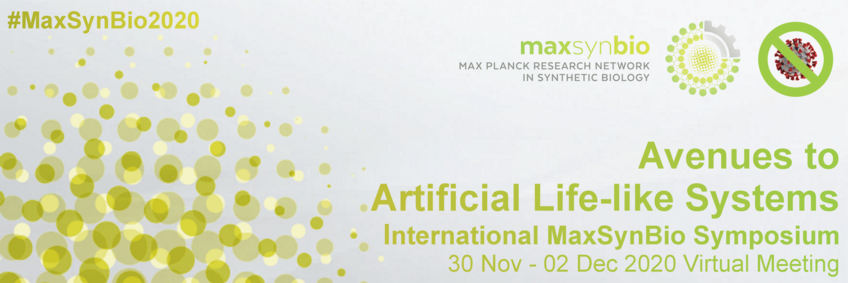
#03 - Buds, Necklaces, Tubes - Shape Instabilities of Asymmetric Membranes of Giant Unilamellar Vesicles
Tripta Bhatia (Max Planck Institute of Colloids and Interfaces, Potsdam)
Monday, 30 Nov 21:15 - 22:00 CET
Access to the BigBlueButton rooom for this Mini Talk via the lists for Monday and Tuesday.
Please make yourself familiar with BigBlueButton before you join the Mini Talk - read the instructions.
Abstract
Title: Buds, Necklaces, Tubes - Shape Instabilities of Asymmetric Membranes of Giant Unilamellar Vesicles
Author(s): Tripta Bhatiaa, Simon Christa, Jan Steinkühlerb, Jaime Agudo-Canalejoc, Tom Robinsona, Rumiana Dimovaa, and Reinhard Lipowskya
Affiliations: aMax Planck Institute of Colloids and Interfaces, Potsdam; bNorthwestern University, Chicago; cMax Planck Institute for Dynamics and Self-Organization, Göttingen
Giant unilamellar vesicles (GUVs) represent biomimetic and biocompatible compartments with linear dimensions of many micrometers [1,2]. The bilayer membranes with a thickness of only a few nanometers, can respond sensitively to changes in their composition [3] as well as in local aqueous environment [4]. We discuss two different examples of the vesicle walls consisting of, i) asymmetric leaflets facing symmetric aqueous solution and ii) symmetric leaflets facing asymmetric aqueous solution to demonstrate that GUVs can amplify the nanoscopic responses to larger scales, thereby attaining many different shapes such as membrane inward and outward buds and tubes. We are particularly interested in multi-sphere morphologies, consisting of one membrane that forms several spheres connected by closed membrane necks. These necklaces can transform to tubes if the length is increased further and vice-versa as confirmed by solution exchange using microfluidics and optical microscopy [5]. The spontaneous curvature provides a quantitative measure for the asymmetry between the two leaflets of the bilayers. The stability of the necks is governed by relatively simple conditions that allow us to estimate the spontaneous curvature directly from the shape of the necks [2,4,6]. In the context of cell biology, shape transformation of membranes represents an essential step in many biological processes such as the transport and storage of materials across cellular compartments, engulfment by endo- or exocytosis, protein crowding and the division of cells by cytokinesis [6,7]. The work was supported by the Max Planck Society and the German Federal Ministry of Education and Research (BMBF) via the MaxSynBio consortium.